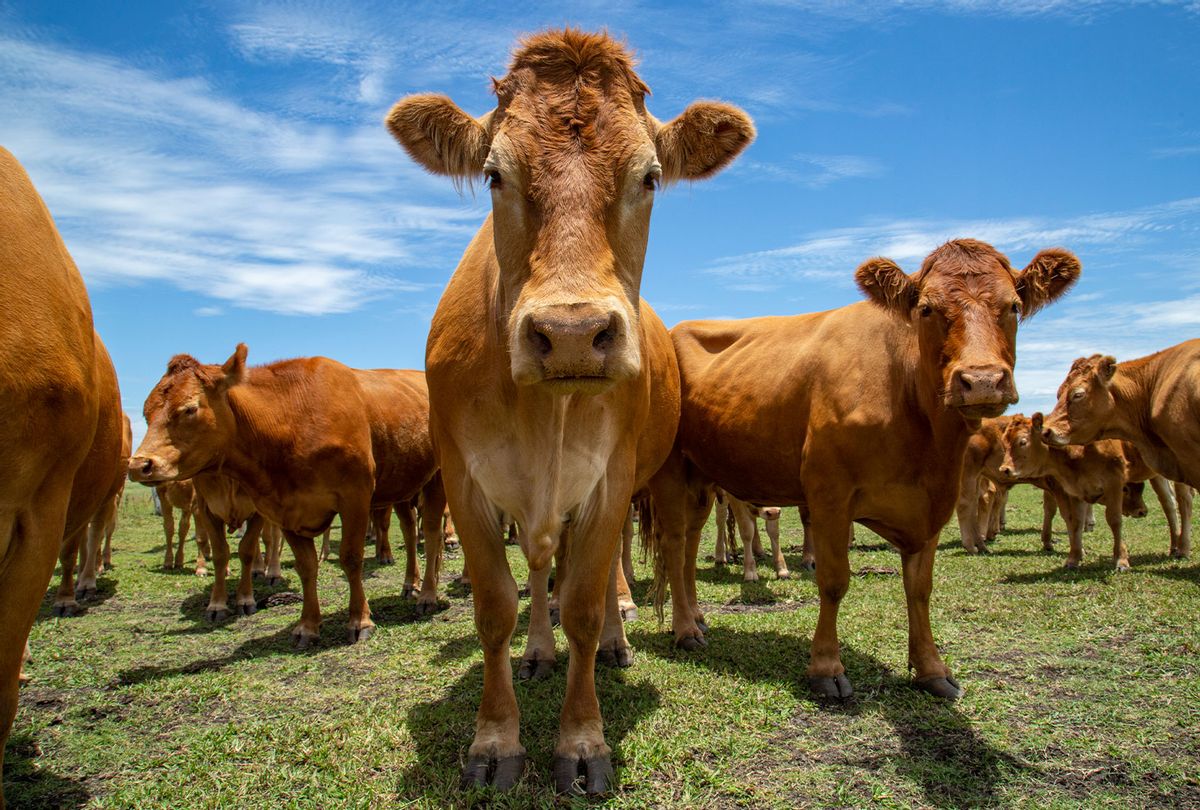The world now has a roadmap for food and climate. But it’s missing a few things

The first-ever day devoted to food and agriculture at the United Nations’ annual climate conference was expected to be momentous. But some of the buzz fizzled at the gathering in Dubai on Sunday after the U.N. released the first part of its much-anticipated “roadmap” to easing hunger and reducing climate pollution from food and agriculture, a source of about a third of the world’s greenhouse gas emissions. It was far from the groundbreaking proposal that climate advocates hoped for. They say it lacks a vision to move away from chemical fertilizers and an industrial livestock industry that emits an astonishing amount of methane.
“The roadmap fails to name the fact that industrial agriculture is the second largest cause of emissions on the planet,” said Teresa Anderson, who leads the global climate justice program at ActionAid International, a humanitarian organization. “It sort of dances around the elephant in the room by refusing to name the real problem. It’s a ‘trying to please people’ sort of report, without calling anyone out.”
The first-of-its-kind roadmap aims to reform how food is produced around the world to keep global warming below 1.5 degrees Celsius (2.7 degrees Fahrenheit). It’s essentially a guidebook drafted by the U.N.’s Food and Agriculture Organization in the hope that member countries will eventually follow the recommendations. The document outlines goals for cutting a quarter of methane emissions from livestock by 2030, feeding the world in a way that’s carbon-neutral by 2035, and turning agriculture into an industry that soaks up more carbon than it emits by 2050. Addressing not only crops but also fisheries, food waste, forestry, and more, the FAO advocates for a “global rebalancing” of meat consumption and access to nutritious foods and calls for “improved efficiencies,” like shifting to livestock feed that cuts down on methane pollution.
Advocates have lauded world leaders for finally talking about food and agriculture at this year’s conference. But some think the roadmap falls short. In particular, critics say, it prioritizes incremental change over wholesale shifts in agriculture, such as moving away from industrialized farming and toward an approach that promotes biodiversity and carbon storage by integrating crops with surrounding ecosystems.
The roadmap also barely mentions fossil fuels. By one estimate, 15 percent of global oil, gas, and coal use is tied to food and agriculture. The FAO’s proposal has a section on clean energy, but it focuses on making biofuels more sustainable and on controversial technologies such as carbon capture rather than tackling the pervasiveness of oil and gas across agricultural supply chains.
“Industrial food systems are locked into fossil-fuel dependency,” said Patty Fong, who directs a climate program at the Global Alliance for the Future of Food. “They’re not actually calling for decoupling food systems from fossil fuels.”
The FAO document highlights 120 actions, such as curbing methane emissions from rice farming (a source of 8 percent of human-generated methane) and improving soil health by, for example, tilling less land and planting more cover crops like clover. The organization plans to release two more “volumes” of the roadmap at the next two U.N. climate conferences. The second installment will include regional analyses, and the third will have specific country action plans.
Before the organization published the document, climate advocates and critics had anticipated that it would call on wealthy countries like the United States, where the average person eats more than their body weight in meat each year, to consume less and help reduce the vast amount of methane generated by livestock, especially cows. But beyond saying that the world needs to “readjust consumption patterns,” the report doesn’t give details or call out specific countries for consuming too much.
The roadmap also says next to nothing about alternatives to meat — a solution that the U.N.’s own environmental program, in its first-ever report on alternative proteins, described as “important” just a few days before the roadmap came out.
Shayna Fertig, a co-author of that report and an adviser at the Good Food Institute, an international think tank based in Washington, D.C., that promotes alternative proteins, said efforts to improve animal agriculture are necessary but shouldn’t come at the “expense” of developing substitutes for meat and dairy.
Fong said she wasn’t surprised that the roadmap didn’t harp on meat consumption, a “highly political” issue.
One thing the report does advocate for is making livestock farming more productive by breeding climate-resilient cows and developing animal feed that’s more digestible — so that cattle belch less methane. Some researchers consider these reforms to be necessary as demand for meat rises, but others see them as distractions from the broader need to make the world less dependent on industrialized animal agriculture.
Despite what she considers drawbacks and omissions, Fong said the roadmap wasn’t a total letdown. She praised it for being “comprehensive” — because it touches on a lot more than agriculture — and for taking on often-overlooked problems like land use. The destruction of carbon-rich forests and wetlands by expanding animal agriculture is one reason farming accounts for so much of the world’s greenhouse gas emissions, and among the FAO’s more ambitious goals is one to end all deforestation by 2035.

